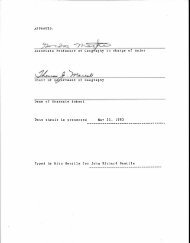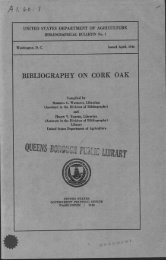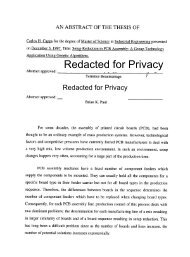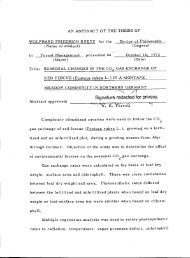In vitro anaerobic trinitrotoluene (TNT) degradation with rumen fluid ...
In vitro anaerobic trinitrotoluene (TNT) degradation with rumen fluid ...
In vitro anaerobic trinitrotoluene (TNT) degradation with rumen fluid ...
Create successful ePaper yourself
Turn your PDF publications into a flip-book with our unique Google optimized e-Paper software.
<strong>In</strong> summary of the <strong>anaerobic</strong> conditions, there was no evidence of ring<br />
cleavage, but <strong>TNT</strong> reduction rates were faster than when exposed to aerobic<br />
conditions. The polymerization of HADNT was negligible or was not detected.<br />
Furthermore, complete <strong>TNT</strong> reduction to TAT was accomplished only for <strong>anaerobic</strong><br />
conditions (24). Sulfite reductase, nitrite reductase, or hydrogenase catalyzed the<br />
reduction of nitro groups. The reduction of para-positioned nitrogroups was followed<br />
by ortho-positioned groups. As observed by Boopathy and Kulpa (5), the <strong>TNT</strong><br />
removal rate under conditions of denitrification was higher than other conditions when<br />
<strong>TNT</strong> was involved in cometabolism. Figure 1.2 represents integrated pathways of<br />
<strong>TNT</strong> <strong>degradation</strong> for different energy sources exposed to <strong>anaerobic</strong> processes.<br />
Desirable results for the <strong>anaerobic</strong> <strong>degradation</strong> of explosives include deaminization<br />
processes when <strong>TNT</strong> acted as the nitrogen source (3, 4, 10), and hydroxylation of<br />
nitro groups of <strong>TNT</strong> by unspecified enzymes (13, 25).<br />
11














